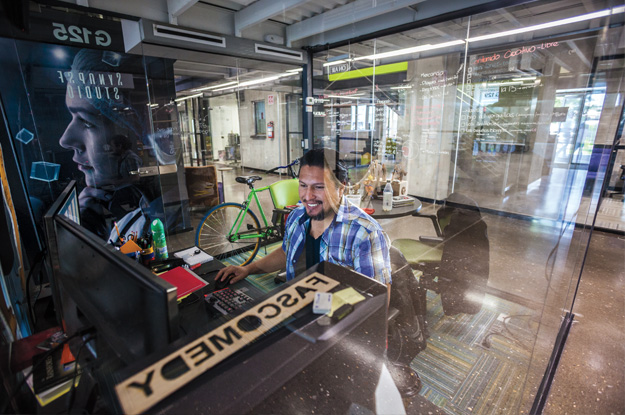This article features commentary on AQ’s Top 5 Urban Visionaries: Ricardo Mora, and appears in our recent print issue on how to make Latin American cities better places to live and work. | Leer en español
How will technology affect jobs in Latin America? And how must our cities adapt?
In the past, experts have pointed to the polarization of the labor market: high- and low-skilled occupations have gained participation in total employment at the expense of middle-skilled ones. Routine tasks — which follow easily definable procedures that could be replicated by a program — are characteristic of middle-skilled jobs: manual blue-collar occupations in manufacturing and cognitive white-collar administrative occupations. By contrast, technology finds it hard to replace high-skilled abstract tasks that require persuasion, creativity or problem-solving, as well as low-skilled non-routine manual tasks that require situational adaptability, visual and language recognition, and personal interaction.
This view, however, needs to be revised. As artificial intelligence advances, both low-skilled jobs (drivers, deliverymen) and, to a lesser extent, high-skilled occupations (physicians, accountants, programmers) are becoming partially computerizable. This not only translates into a wider wage premium and a more unequal income distribution within the workforce; it also shifts job creation to independent and often precarious modes of employment.
Technological unemployment is not a rich-country dilemma: The core of the labor force in Latin America is comprised of low- and medium-skilled routine workers, and the education menu is hardly pertinent to the skills demanded in the market. Moreover, a gradual replacement of full-time jobs by freelance and “gig” work not only creates the need to extend benefits often tied to salaried jobs (for example, by making benefits cumulative or portable); in Latin America, the independent worker is mostly informal, below minimum wage and precarious, with few skills — thus, ill prepared to face the impact of technology. Education + Entrepreneurship, a recipe sometimes voiced in global panels on the future of work, would hardly apply in this case.
What to do then? The oft-mentioned education revolution needs to adopt a fairly precise direction: shorter programs for college students, more attuned to higher job turnover and rapid change in demanded skills; dual education for the majority of students who drop out of formal education (many times due to well-founded doubts about its payoffs) without a degree; vocational training for current workers exposed to automation and displacement. There must be a better match between training and market demands. And this is where local governments must help — by convening a rich interaction between the public sector, employers and the private sector.
Where should they focus? Experts agree that the new frontier of human work will be occupations intensive in social intelligence and creativity. Elder care and primary education are typical examples of the former, but there are many other examples of partial automation (for example, an automated diagnosis program will take on part of the physician’s workload, but not his role as a human interface with the patient). The same could be said for customer service or, some would argue, face-to-face business interaction.
Creativity is a much broader concept. It may refer to innovation in the sense of new ideas and practical solutions.
Inasmuch as AI is a surprisingly fast learner of what is already out there, one could speculate that this sense of originality will always be a human feature (although this view is certainly not unanimous). But creativity has a second, more challenging connotation. In 1936, Walter Benjamin argued that the difference between the Mona Lisa and a perfect mechanical reproduction of the Mona Lisa lay in the former’s aura, something related to its uniqueness that endows it with its huge value (and price). Today, AI can replicate art: It can paint a canvas or write a piece of music. But if, as I believe, AI cannot reproduce Benjamin’s aura, then a large menu of artistic and artisanal occupations will remain resilient to automation and — if technological progress allows us more leisure time — in great demand.
We all want to see more education and high-quality jobs, but without a good skill match we will continue to see overqualified workers coexisting with pockets of underemployment and human capital deficits. Above all, what we want to see is more jobs that are pertinent to our workers. In large, decentralized economies, national policies are simply not enough to address the labor problem; cities need to take over this challenge, critical for their development and success, orienting vocational training to, and promoting activity in dynamic services like education and care, tourism and creative industries. Now is the time.
—
Levy-Yeyati is dean of the School of Government at Torcuato di Tella University in Buenos Aires





